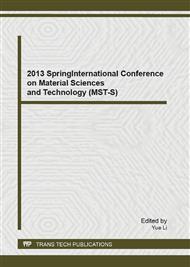p.126
p.132
p.141
p.149
p.155
p.161
p.167
p.173
p.179
Influence of Different Cooling Systems on Surface Roughness in the Turning of the Ti-6Al-4V Alloy Used as Biomaterial
Abstract:
Titanium and its alloy are materials with great application in the aeronautic and biomedical area. These applications have grown in the last decade due to high resistance to corrosion and biocompatibility of the Titanium alloys. However, Titanium and its alloys are classified as hard-to-machining materials that increase the production costs due to the highest tool wear. Thus, the finishing of components made of Titanium alloys can be impaired due to the complex shearing mechanism. This work shows a study of the influence of cooling systems and the input parameters on the turning of the Ti-6Al-4V alloy. Two depths of cut, two feed rates, new and worn tools, and three cooling systems were used as input parameters. The response was the surface roughness measured according to the Ra parameter. According to the results, it can be supported that the variation of all input parameters has influence on response. However, the most important input parameter on surface roughness was the feed rate. Thus, it can be concluded that the correct choice of the cutting parameters is relevant to produce high-quality components.
Info:
Periodical:
Pages:
155-160
Citation:
Online since:
June 2013
Keywords:
Price:
Сopyright:
© 2013 Trans Tech Publications Ltd. All Rights Reserved
Share:
Citation:


